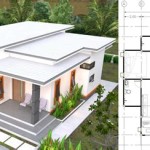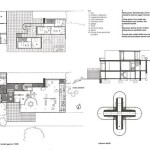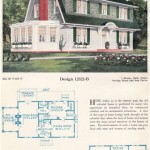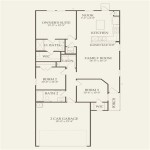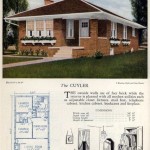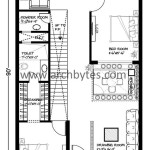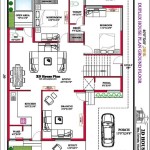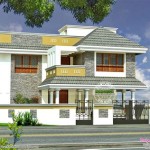N Gauge Model Building Plans
N Gauge model railroading offers a unique blend of intricate detail and space-saving design. Building structures for an N Gauge layout requires careful planning and execution. This article explores various aspects of N Gauge building plans, from sourcing them to creating custom designs.
Key Considerations for N Gauge Building Plans
Several factors influence the choice and implementation of N Gauge building plans. These considerations ensure the chosen plans align with the overall layout design and modelling skill level.
Scale Accuracy: Plans should adhere to the 1:148 scale to maintain realism and consistency.
Skill Level: Projects range from simple kits to complex scratch-built structures, requiring varying skill levels.
Materials: Common materials include cardstock, plastic, wood, and resin, each with its advantages and disadvantages.
Space Requirements: Building footprints should be carefully considered in relation to the available layout space.
Era and Style: Architectural styles should match the chosen historical period and geographical location.
Sourcing N Gauge Building Plans
Numerous resources provide N Gauge building plans, catering to different preferences and modelling approaches.
Model Railroad Magazines: Publications often feature building plans, ranging from simple structures to complex projects.
Online Resources: Websites dedicated to model railroading offer downloadable plans, often for free or a small fee.
Commercial Kits: Ready-to-assemble kits provide all necessary parts and instructions, ideal for beginners.
Books: Specialized books on model building offer detailed plans and construction techniques.
Creating Custom N Gauge Building Plans
For unique or specific structures, creating custom plans offers greater flexibility and control over the final product.
Prototype Research: Studying real-world buildings provides inspiration and accurate dimensions for scaling.
Drawing Software: Computer-aided design (CAD) software enables precise drafting of building components.
Scale Drawings: Accurate scaling of dimensions is crucial for maintaining realism and proper proportions.
Material Selection: Choosing appropriate materials based on the desired level of detail and construction technique.
Construction Techniques for N Gauge Buildings
Different techniques cater to various skill levels and desired outcomes.
Card Modeling: Cutting and assembling pre-printed cardstock parts, often found in kits or downloadable plans.
Plastic Modeling: Using plastic sheets, rods, and tubes to construct detailed structures.
Scratch Building: Creating buildings from raw materials such as wood, styrene, or other suitable materials.
3D Printing: Emerging technology allowing for highly detailed and complex structures to be printed directly.
Adding Details to N Gauge Buildings
Enhancing realism involves incorporating details that bring the structures to life.
Windows and Doors: Commercially available or custom-made windows and doors significantly improve visual appeal.
Signage and Billboards: Adding appropriate signage creates a sense of place and authenticity.
Weathering Techniques: Applying various techniques to simulate aging and environmental effects adds realism.
Landscaping: Surrounding the buildings with appropriate landscaping elements enhances the overall scene.
Tips for Successful N Gauge Building Construction
Careful planning and execution are essential for achieving high-quality results.
Accurate Measurements Precise measurements ensure proper fit and scale accuracy.
Test Fitting: Dry-fitting components before gluing allows for adjustments and prevents errors.
Sharp Tools: Using sharp blades and tools ensures clean cuts and minimizes material damage.
Appropriate Adhesives: Selecting the right glue for the chosen materials is crucial for strong and lasting bonds.
Patience: Model building requires patience and attention to detail for optimal results.
Working with Different Materials
Understanding the properties of different materials contributes to successful construction.
Cardstock: Lightweight and easy to cut, ideal for beginners and quick projects.
Plastic: Durable and versatile, suitable for detailed and complex structures.
Wood: Provides a realistic texture and can be easily shaped and carved.
Resin: Offers high detail and can be cast into intricate shapes.
Lighting N Gauge Buildings
Incorporating lighting enhances the realism and visual appeal of N Gauge structures.
LED Lighting: Small and energy-efficient LEDs are ideal for illuminating interior spaces.
Fiber Optics: Fiber optic cables provide pinpoint lighting for streetlights and other small details.
Wiring Techniques: Careful planning and execution of wiring ensure safe and reliable operation.

Track Plans For N Scale James Model Trains

Scratch Building Realistic Model Buildings Google Search House Plan Homes Trains

Central Wisconsin Seed Co Building Plans In N Ho O And S Scales Modelrailroader Com

N Scale Track Plans 2x6 Model Railroad Layouts Plansmodel

Free Printable Ho Scale Buildings Model Homes N

N Scale Train Layout Plans Model Railroad Layouts Plansmodel

Building A 17 X30 N Scale Model Railroad

Jayson S 3 X 5 Outstanding N Scale Model Train Layout

N Scale Layouts Model Railroad Plansmodel Plans

Free Stuff Scalecast











